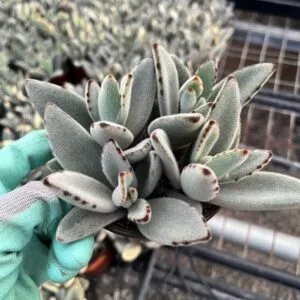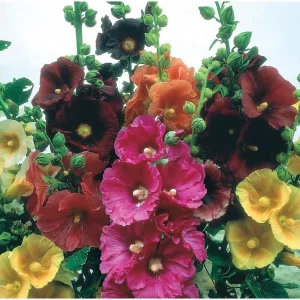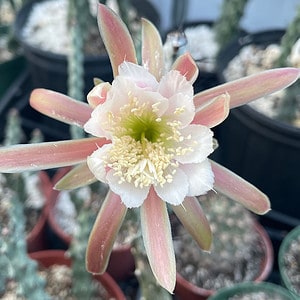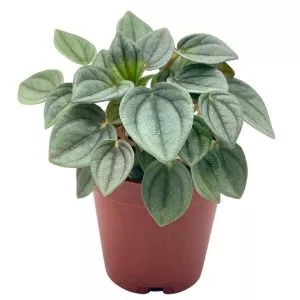No products in the cart.
Table of Contents
Do you want a spectacular orchid species that produce only blue flowers? Then the Vanda orchid is what you need.
Still, this orchid species also displays other colorful flower spikes. In addition, the flower shows flat petals that are distinguished from most orchids as it has rambling roots grabbing onto objects and other trees.
The best time to plant the Vanda orchids is in spring when coming out of winter dormancy.
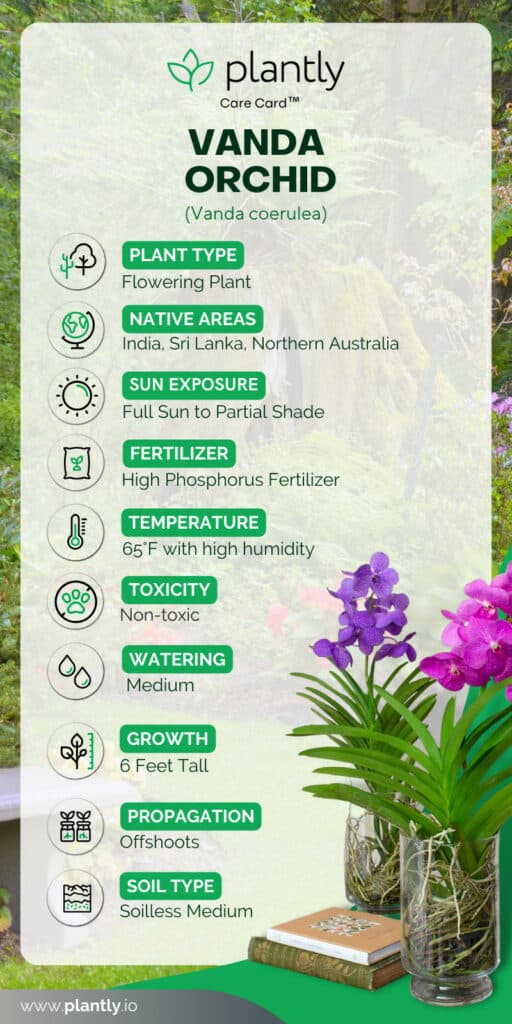
Vanda Orchid Care
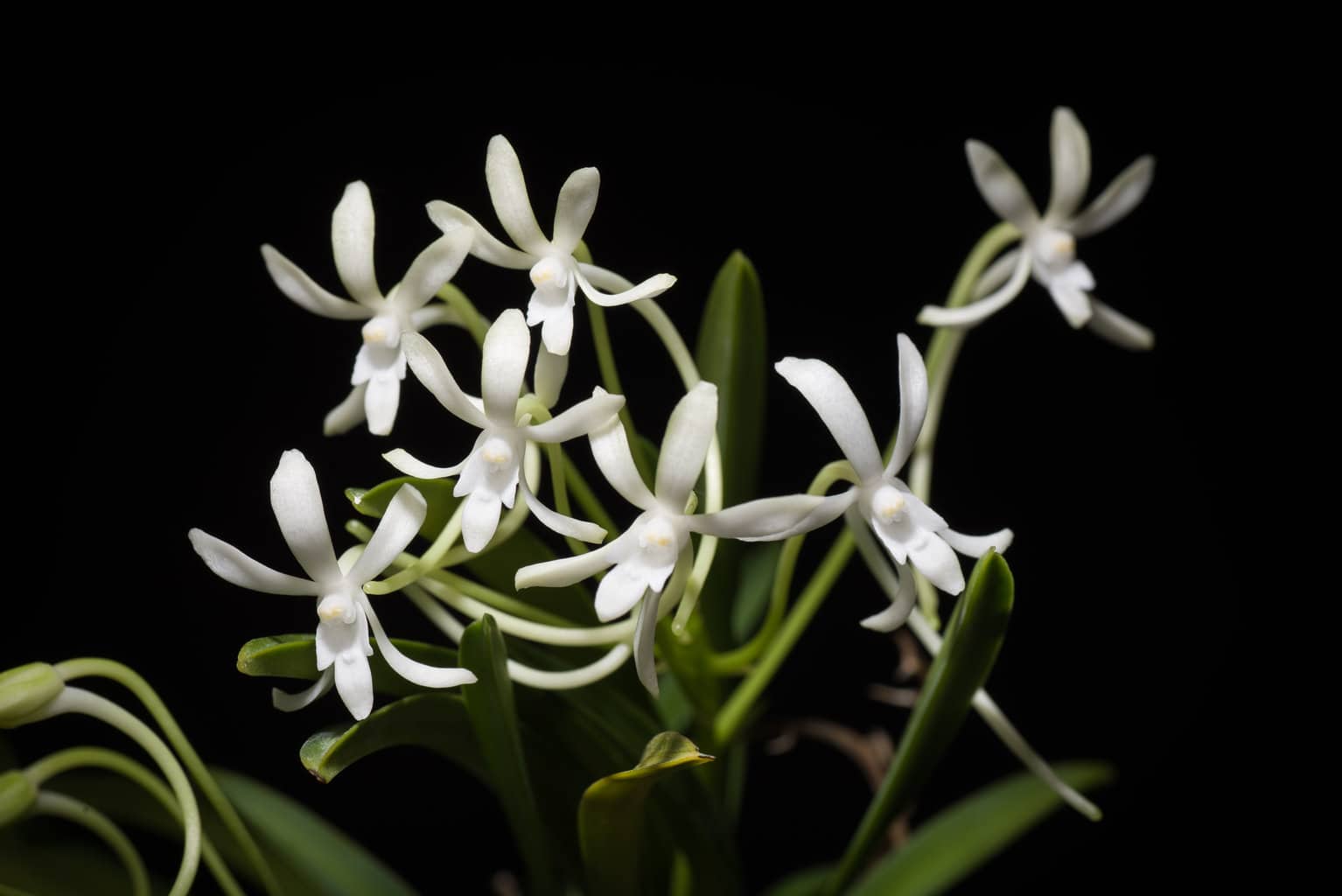
Blue orchids are not the best indoor plant for beginner plant parents. The reason is that even experienced orchid growers find it hard to keep up with the Vanda species’ home requirements.
The Vanda genus can grow up to six feet tall, considering the aerial curtain roots. Hence, they grow best in a greenhouse to flourish with sunlight and overhead irrigation. These monopodial orchids grow on a single stem, with the roots growing from the bottom.
The leaves alternate to climb to the stem with a ladder-like form. Your mature Vanda orchids branch, and when left undivided, they grow large. Furthermore, Vanda plants are epiphytic and can attach to other surfaces rather than grow in soil.
Soil for a Vanda Orchids
The Blue orchids grow naturally in rocky areas in East and Southeast Asia. Yet, the large roots can spread through the air to grass, nearby objects, and trees. Hence, growing orchids in a potting medium can kill these plants.
Hence, opt for a basket allowing for ample airflow around the roots. To help keep your Vanda plant in place, provide it with some bark, another soilless medium, or peat moss. Or you can use an orchid potting medium as the roots attach to the basket.
Light Exposure for Vanda Species
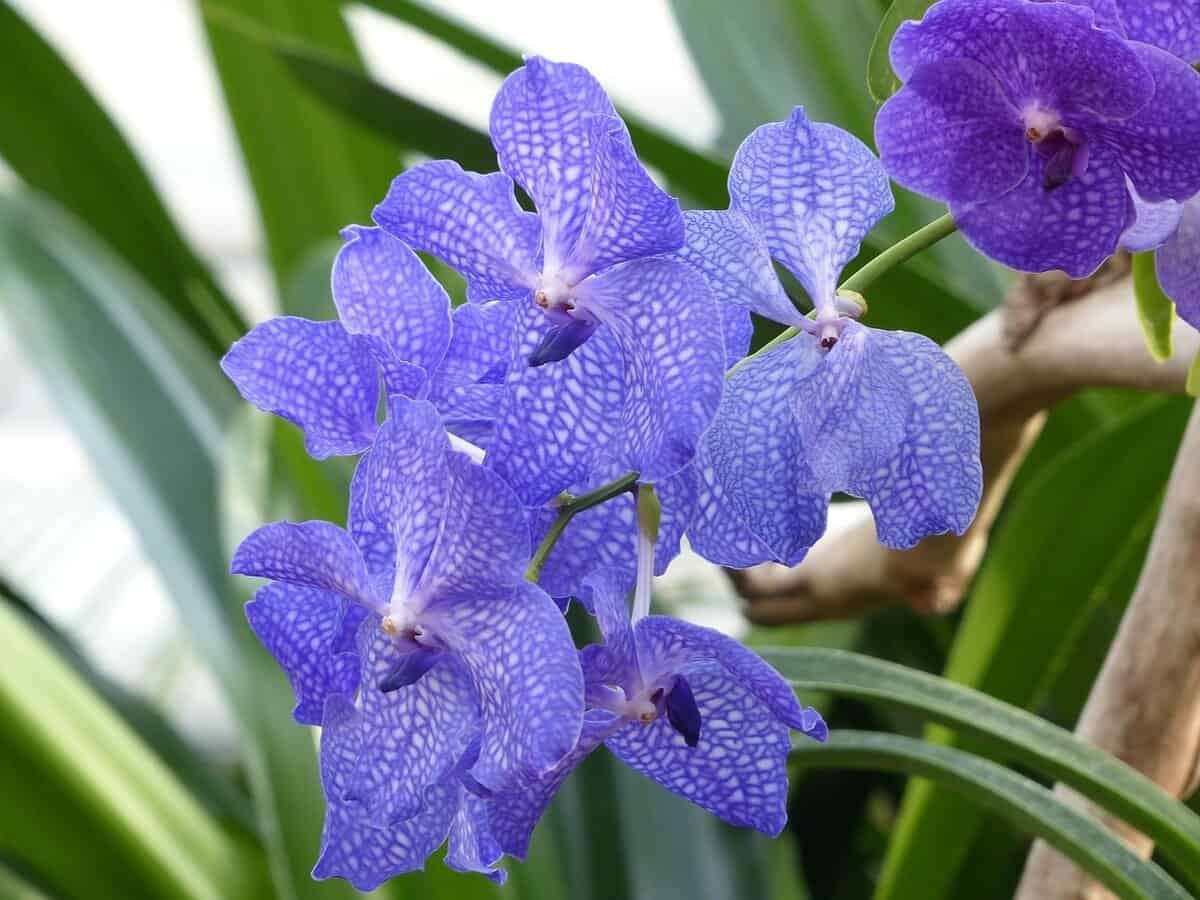
As the orchid grows in tropical Asia, it loves bright light and can flourish in full sun. These outdoor plants acclimate well to full sun but are not healthy Vandas growing in partial shade. When you grow them under a shade cloth, it helps remove the edge of strong direct sun.
Yet some Vanda species need more sun compared to other orchids. Hence, it helps to know the type of leaves your species grow. For example, Vanda orchids can have strap leaves that are long and broad. Or it can grow terete leaves looking round and helps retain water.
Then you have blue orchids with semi-terete leaves falling between the strap and terete shape. Finally, if you have Vanda plants with strap-leaved structure or semi-tetere foliage, it needs partial shade while the others prefer more sun.
The best place for these orchid species indoors is at a south-facing window.
Watering a Blue Orchid
Many Vanda needs a lot of water. When the temperatures are high, they need more water during the day. It can be twice a day. Yet during winter, when tropical plants go into dormancy, you can refrain from watering and only leave it moist.
You can check our Ways to Properly Do Orchid Watering article for a detailed guide on watering these gorgeous hotties.
Fertilizing Vanda Orchid
The Vanda orchids are heavy feeders; when well-fed, they bloom better. You can fertilize weekly using a 20-20-20 feed during the growing season. Then you can switch to using a high phosphorus fertilizer with every third application to promote blooms. It helps to cut back on feeding every four weeks during the winter months.
Temperature & Humidity

The Vanda thrives in tropical climates with bright light and tolerates temperatures above 65°F. While Vanda orchids can tolerate lower temperatures, they do not enjoy prolonged cold as it affects their growth and flowering.
The plant also needs high-humidity environments of at least 60% to 80%. To help raise the moisture, it helps to place your Vanda spp. on a pebble tray with water. Yet, do not let the roots sit in the water as it can lead to root rot.
Alternatively, by placing them with other moisture-loving plants, you can use the grouping plant method.
Repotting, Blooms, and Pruning
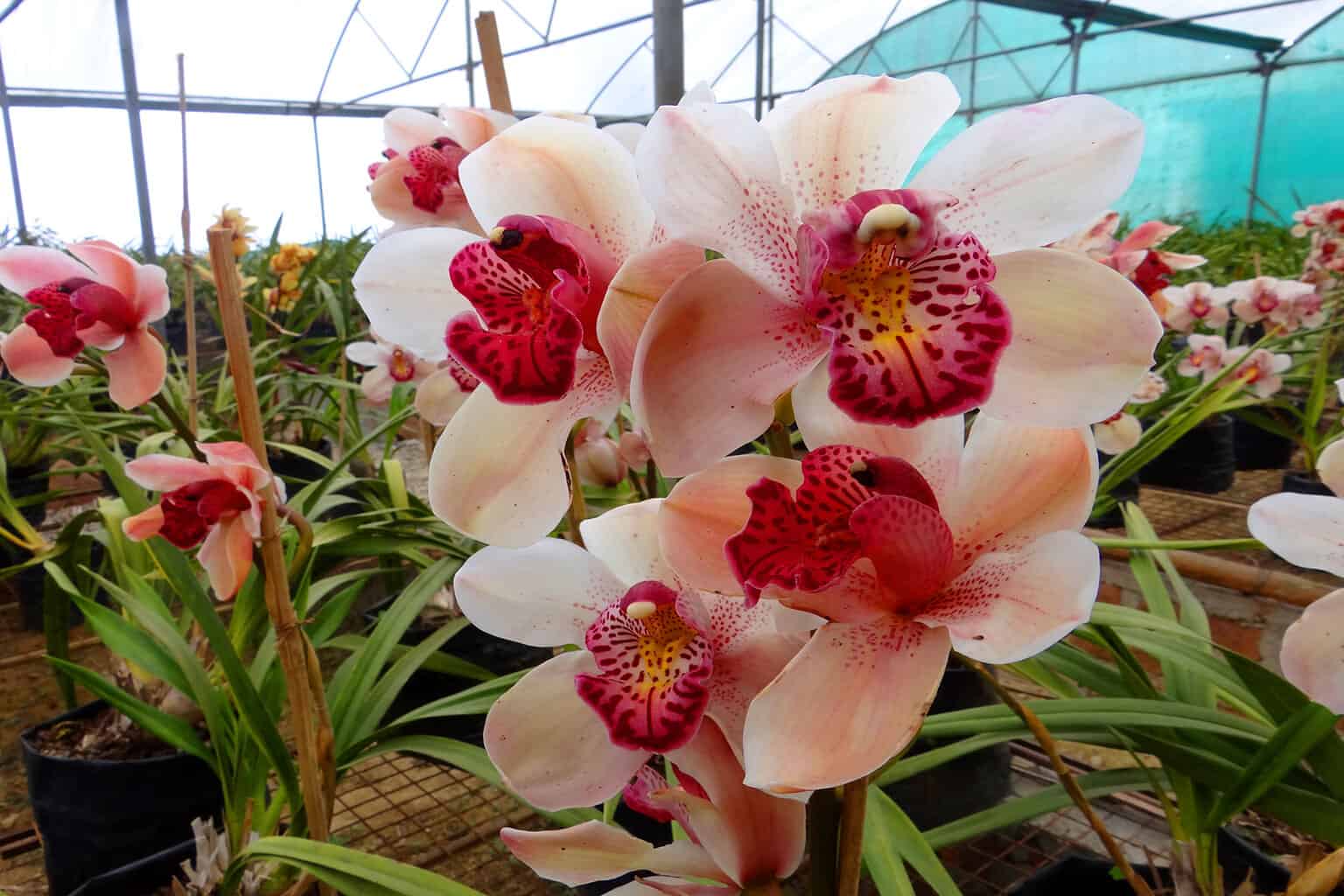
When you grow your orchid in a basket, you can leave it alone for a couple of years. The only time to repot your plant is about every year. But before you do this, soak the roots in water. Then trim any dead or damaged roots in a larger basket or clay pot.
When you see the potting medium break, replenish it with fresh medium. Leave your plant to dry before watering again. The best part of your plant is the blooms in blue or purple. The flowers are displayed with rounded petals growing in different sizes.
You can find some of these orchids growing orange, pink, red, or white flowers. The blooms often happen during all times of the year and are long-lasting. You can prune your orchids by trimming back the old stems to encourage new growth.
In stock In stock In stock In stock
$9.00
Sold By:
Cacti and Exotica
Kalanchoe tomentosa—Panda Plant
Rated 4.98 out of 5 based on 59 customer ratings00
Sold By:
Cacti and Exotica
Free Shipping
$9.59
Sold By:
CZ Grain
Giant Danish Holyhock Seeds
Only 886 available and it’s in 1 people’s basket Rated 4.60 out of 5 based on 156 customer ratings00
Sold By:
CZ Grain
$19.95
Sold By:
Orchid Stuff Plus
$24.95A beautiful Royal Palm in a 4 inch pot.
Only 1 available and it’s in 1 people’s basket Rated 5.00 out of 5 based on 1 customer rating00
Sold By:
Orchid Stuff Plus
$18.00
Sold By:
Beauties & Beasts
Cactus – Monvillea spegazzinii
Only 2 available and it’s in 1 people’s basket Rated 4.83 out of 5 based on 24 customer ratings00
Sold By:
Beauties & Beasts
Propagating Jewel Orchid Plants
Your Vanda orchids are happy with gritty soil, an old basket, and distilled water. As your plant is happy, you can propagate it from cuttings. You will notice small offshoots found above the main root.
When the sprouts have three leaves with aerial roots, you can cut them away from the main stem.
Then replant the shoots in an orchid mix using a suitable container with enough air circulation and drainages like a clay pot or basket. Keep your plant moist until the roots anchor in the growing medium.
Vanda Orchid Varieties
You can find more than 80 species or even hybrids of the Vanda orchids. Here is a few of them.
Blue Orchid
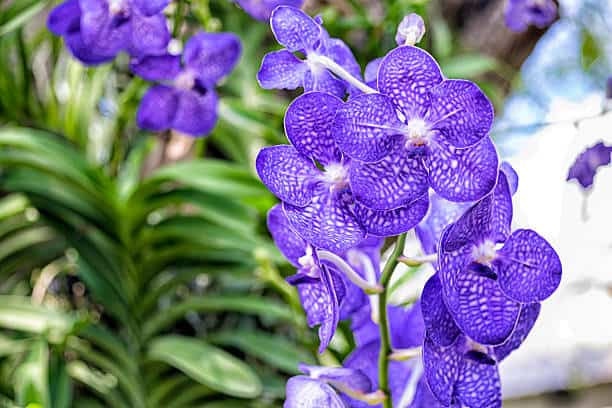
The Vanda coerulea is a compact growing species with attractive blue-purple flower spikes.
Sander’s Vanda Orchid
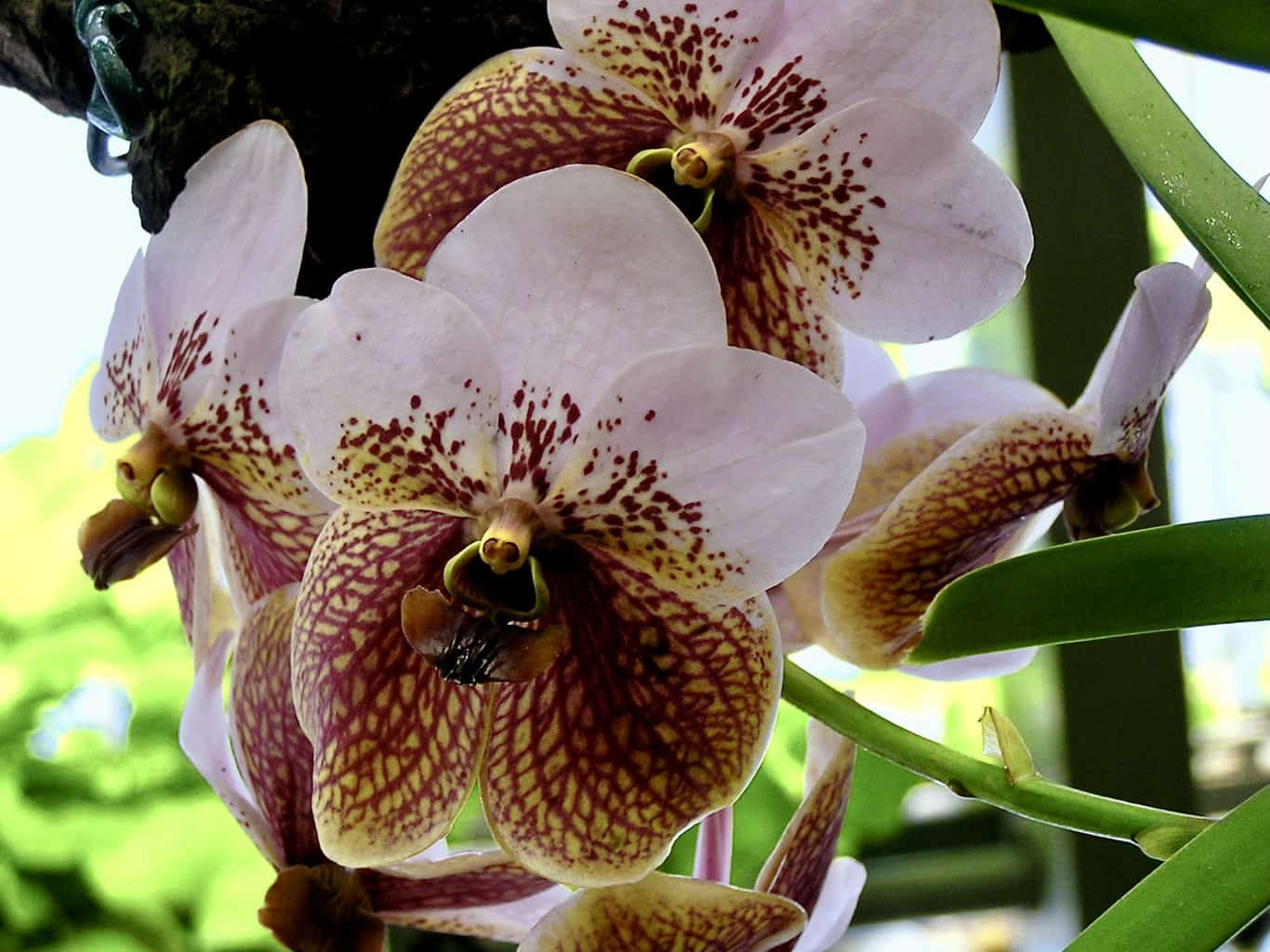
Vanda sanderiana has pink or white flower spikes.
Checkered Vanda Orchid

Vanda tessellata grows yellow flowers with brown lines and white margins.
Vanda Orchid Diseases & Pests
The biggest problem you can face with these large plants is mealybugs. But you will need to search for them as they hide near the stem and leaf inside your plant. Other pests are aphids and scale. You can apply neem oil or insecticidal soap to eliminate these pests.
The other concern is root rot from overwatering. So, it is best to keep an eye on your watering schedule not to overwater.
Where to Buy a Vanda Orchid Plant?
The type of Vanda you want depends if it is an endangered species or not. Still, you can find some varieties sold at the local garden center or Plantly online.
Whether you want to buy, sell or simply reach out to other plant enthusiasts, Plantly is the right place to be!
Only 1 left in stock In stock In stock In stock
$10.00
Sold By:
Smoot's Farm
Echeveria Topsy Turvy Runyonii Succulent 4″ Pot Live Plant
Rated 4.89 out of 5 based on 27 customer ratings00
Sold By:
Smoot's Farm
Free Shipping
$24.95 – $29.95
Sold By:
A&K Plants
Lively Philodendron Neon | Easy-care Epiphytic Vine | Vibrant Foliage | 4-inch pot
Only 4 available and it’s in 1 people’s basket Rated 4.95 out of 5 based on 66 customer ratings00
Sold By:
A&K Plants
$30.00
Sold By:
Southern Oak Exotics
Chlorospatha Species Ex Ecuador
Sold By:
Southern Oak Exotics
$6.99
Sold By:
BubbleBlooms
Green Ripple Peperomia Frost
Only 97 available and it’s in 1 people’s basket Rated 4.81 out of 5 based on 279 customer ratings00
Sold By:
BubbleBlooms
